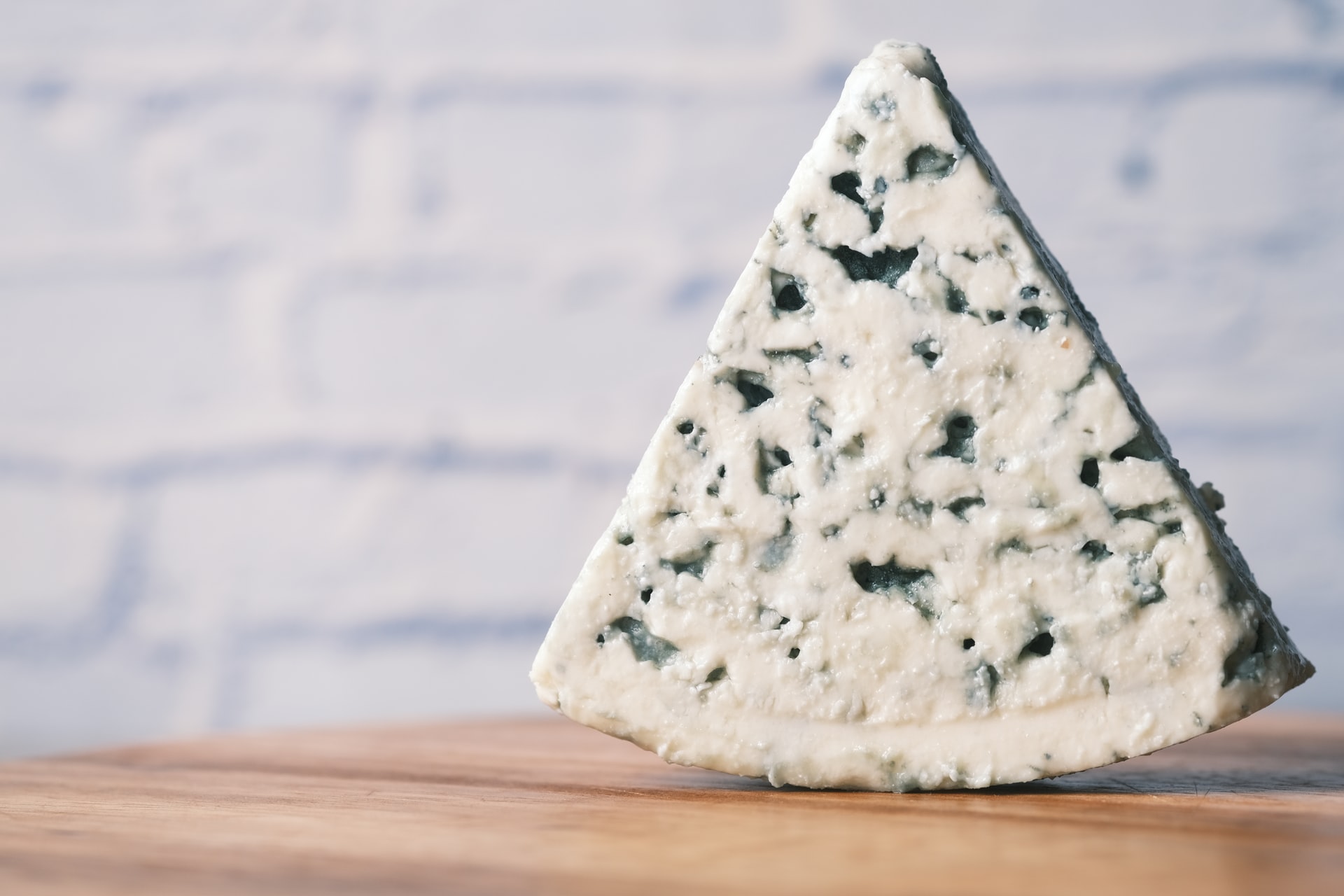Produced in France, Roquefort cheese is a variety of blue cheese made using sheep’s milk. It undergoes an unusual production method, resulting in a unique-tasting cheese. But if you cannot find this cheese for your dish, sourcing a Roquefort cheese substitute is easier than you think.
This tangy, creamy, blue-veined cheese is most often used in French cuisine. It’s a common topping for salads and is used to make salad dressing. But it’s also often crumbed over various different dishes to add an element of tartness.
This article will dive into the Roquefort cheese alternatives available to you and when best to use them.
Contents
What is Roquefort Cheese?
There are many Roquefort-style cheeses available across the globe. But real Roquefort cheese is a French blue cheese made from the milk of the Lacaune sheep. The cheese is veined with the greenish-blue mold called Penicillium roqueforti, which gives it a characteristic tangy flavor.
This special cheese is produced in the village of Roquefort-sur-Soulzon in the Aveyron region of Southern France. And the cheese is traditionally made in caves carved into the cliffs. Here, they are placed on shelves to age for several months.
During this time, they are frequently turned and brushed with salt water. And, when ripe, the cheese delivers a creamy texture and a sharp, salty flavor.
Roquefort cheese is usually served as part of a salad or filling for canapés. But it can also be crumbled over cooked meats or baked pasta dishes. And it’s the primary ingredient in Roquefort dressing, Roquefort pasta, and Roquefort tart.
Substitutes for Roquefort Cheese
If you’re in the mood for a savory, tangy cheese but don’t have any Roquefort on hand, don’t worry. There are plenty of other cheeses that can stand in as substitutes. Who knows, you might just discover a new favorite.
1. Gorgonzola Cheese
Gorgonzola Cheese is one of the oldest types of blue cheese in existence. Records of its production date back to the 11th century. It’s made from cow’s milk and is slightly sweeter and creamier than Roquefort cheese.
Both cheeses are aged for two to three months, which gives them their characteristic sharp flavor. And gorgonzola cheese can be used in all the same dishes as Roquefort cheese, such as salads, pasta dishes, pizza, and more.
2. Maytag Blue Cheese
Maytag blue cheese is produced in the United States. While its flavor is similar to that of Roquefort Cheese, it’s not as strong. In fact, it delivers a creamier texture than Roquefort cheese and does not have the same crumbly texture.
For this reason, it’s often preferred by those not keen on a very sharp cheese. As such, this US-born blue cheese is an excellent substitute for Roquefort cheese in almost every instance.
3. Bleu d’Auvergne
If it’s a milder French blue cheese you’re after, look no further than Bleu d’Auvergne. This blue cheese variety is made with cow’s milk producing a softer cheese, spreadable at room temperature.
Bleu d’Auvergne is also less pungent than Roquefort cheese, making it more palatable for some people. As such, it does not have the same level of sharpness or complexity of flavor as Roquefort cheese. However, it is still an excellent choice for dishes that call for a milder blue cheese, such as salads or pasta dishes.
4. Cashel Blue Cheese
Another blue cheese made with cow’s milk, Cashel blue cheese hails from Ireland. Cashel blue cheese carries a slightly milder flavor than Roquefort Cheese. But it provides a similar texture.
A milder cheese like Cashel blue cheese is an ideal choice if the dish contains strong flavors, such as garlic or onion. Overall, Cashel blue cheese is versatile and can substitute for Roquefort cheese in many different dishes.
5. Stilton
Stilton is an English blue cheese with a similar taste and texture to Roquefort cheese. However, Stilton is made using cow’s milk. Despite this, Stilton has a strong and may not be suitable for people who are sensitive to sharp cheeses.
That said, this tangy flavor can benefit dishes where the cheese is used as a condiment or garnish. Stilton is also less crumbly than Roquefort, so it’s easier to work with. Use Stilton as a topping for pizzas, salads, pasta bakes, and more. Or add it to your next cheese board.
Conclusion
It’s vital to note that if you’re allergic to penicillin, you should not eat blue cheese.
Roquefort cheese can be difficult to source. So, if you can’t find it or simply don’t like it, this article provides several fantastic options for a Roquefort cheese substitute.
